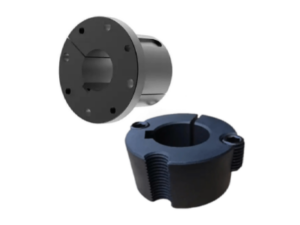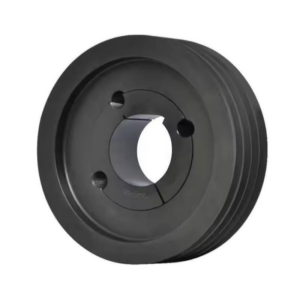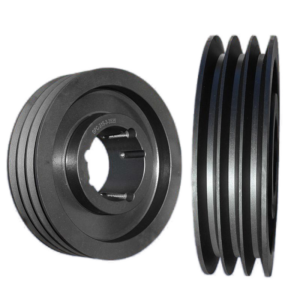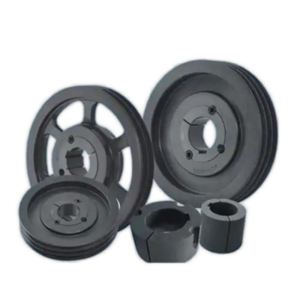Taper bushes (also known as taper lock bushes) are widely used in power transmission components such as pulleys, sprockets, and couplings. Their design allows for easy installation and removal, as well as secure shaft mounting. Understanding their model codes and keyway specifications is essential for proper selection and assembly.
1. Taper Bush Model Code: What Does It Mean?
Taper bush models are identified by a combination of two numbers, such as 3020, which follow a standard format:
[Outer Diameter Code][Length Code]
Example: 3020
- 30 refers to the outer diameter code: 30 × 1/16 inch ≈ 47.6 mm
- 20 refers to the length code: 20 × 1/16 inch ≈ 31.75 mm
These numbers are not direct millimeter measurements but are coded in 1/16 inch units.
2. Full Taper Bush Description Includes Bore Size and Keyway
In practical usage, a taper bush is always paired with a specific bore diameter and keyway. For example:
- 3020-50mm: A 3020 taper bush with a 50 mm bore, including a standard metric keyway
- 3020-2”: A 3020 bush with a 2-inch bore, including a standard imperial keyway
The internal bore size must match the shaft diameter, and the bush comes pre-machined with the appropriate keyway based on standard specifications.
3. Typical Taper Bush Sizes
| Model | OD × Length (inch × 1/16) | Bore Range (mm) |
|---|---|---|
| 1008 | 1.00 × 0.50 | 9–25 mm |
| 1210 | 1.25 × 0.625 | 10–32 mm |
| 2012 | 2.00 × 0.75 | 20–50 mm |
| 3020 | 3.00 × 1.25 | 25–75 mm |
| 3535 | 3.50 × 2.1875 | 35–90 mm |
4. Standard Keyway Dimensions
Keyways ensure secure torque transmission between the shaft and the mounted component. Standard keyway dimensions are regulated by national and international standards such as:
- GB/T 1096 (China)
- DIN 6885 (Germany)
- ISO R773 / ISO 2491 (International)
- BS 4235 (UK)
Key Parameters:
- d = shaft diameter
- b = key width
- h = key height
- t1 = depth of keyway on the shaft
- t2 = depth of keyway on the hub/bush
5. Common Metric Keyway Sizes (GB/T 1096-2003)
| Shaft Diameter (d, mm) | Key Width (b, mm) | Key Height (h, mm) | Shaft Depth (t1) | Hub Depth (t2) |
|---|---|---|---|---|
| 6–8 | 2 | 2 | 1.2 | 0.8 |
| 9–10 | 3 | 3 | 1.8 | 1.2 |
| 12–17 | 4 | 4 | 2.5 | 1.5 |
| 18–22 | 5 | 5 | 3.0 | 2.0 |
| 24–30 | 6 | 6 | 3.5 | 2.5 |
| 32–38 | 8 | 7 | 4.0 | 3.0 |
| 40–50 | 10 | 8 | 5.0 | 3.0 |
| 55–58 | 12 | 8 | 5.0 | 3.0 |
| 60–65 | 14 | 9 | 5.5 | 3.5 |
| 70–75 | 16 | 10 | 6.0 | 4.0 |
Each taper bush is pre-machined with the appropriate keyway dimensions for the bore size, so users only need to match it with a standard key.
6. Conclusion
Understanding taper bush codes like 3020 helps in selecting the correct component based on shaft size, bore diameter, and installation dimensions. Keyways are standardized according to shaft diameter and are critical for safe, effective torque transfer. When combined, these systems simplify mounting and ensure reliable mechanical performance in power transmission applications.






